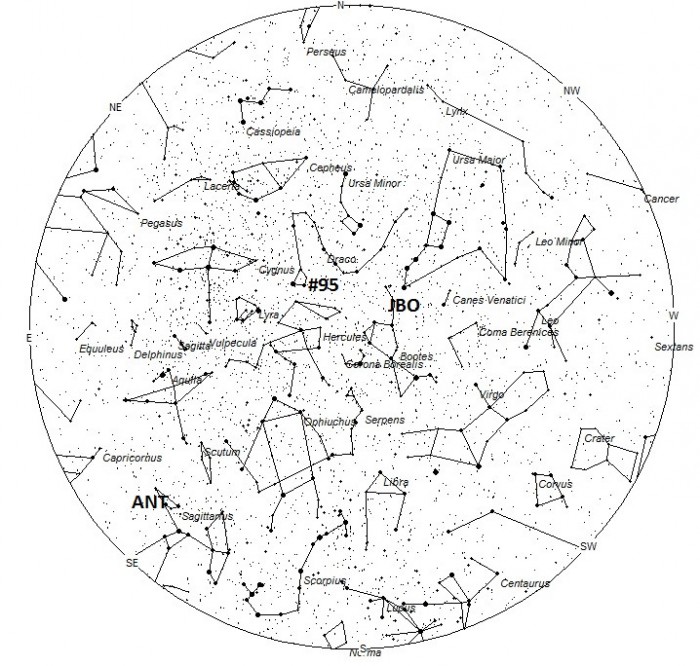Amsmeteors.org, 7/1/13, Robert Lunsford

Meteor season finally gets going in July for the northern hemisphere. The first half of the month will be much like June. After the 15th though, both sporadic and shower rates increase significantly. For observers in the southern hemisphere, sporadic rates will be falling but the overall activity will increase with the arrival of the Delta Aquariids during the last third of the month.
During this period the moon reaches its last quarter phase on Sunday June 30th. At this time the half-illuminated moon is located ninety degrees west of the sun and rises near 0100 local daylight time (LDT) for observers located in mid-northern latitudes. As the week progresses the waning crescent moon will rise later and later, improving the viewing conditions for morning observers. The estimated total hourly meteor rates for evening observers this week is near two as seen from the northern hemisphere and three as seen from south of the equator. For morning observers the estimated total hourly rates should be near eleven as seen from the northern hemisphere and twelve as seen from the southern hemisphere. The actual rates will also depend on factors such as personal light and motion perception, local weather conditions, alertness and experience in watching meteor activity. Morning rates are reduced during this period due to moonlight.

